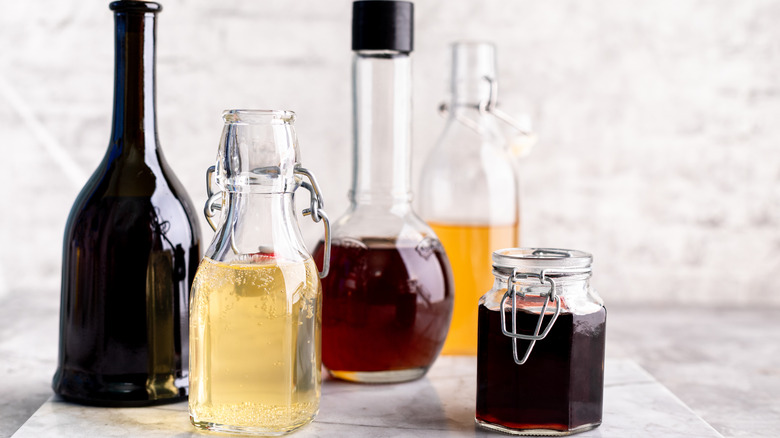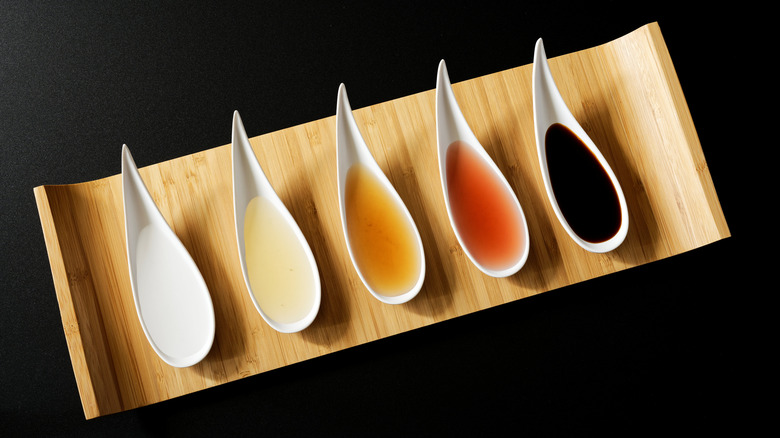Can You Use Red Wine And Balsamic Vinegar Interchangeably?
The food world is full of wonderful — and sometimes recipe-saving — swaps. Greek yogurt can occasionally stand in for sour cream. Whole milk and a little lemon juice or distilled vinegar can famously masquerade as buttermilk. And who hasn't frantically searched for the precise ratio required to substitute baking soda and baking powder? Like all of those, and some less official last minute emergency kitchen exchanges, switching red wine vinegar with balsamic might seem tempting. But the substitution is usually better avoided, because the two are simply too different.
Although its origin dates back to Italy in the middle ages, if you look at the label on the bottle of balsamic vinegar in your kitchen today, the first ingredient will be cooked grape must. That's the product of crushed grapes, including not only the fruit's juice, but also its skin, seeds, and stems, just like it was made nearly a millennium ago. Traditional balsamic vinegar with a DOP designation (which indicates it was produced with traditional methods and prepared locally in Italy) has been reduced, fermented, and aged for at least 12 years. Although other varieties are prepared with less intensity, you probably cannot make any kind of balsamic vinegar at home.
Said to date back to ancient Babylon, red wine vinegar is absent any formal, DOP-style keeper in the modern era. You can probably even make it at home using its two separate titular ingredients, and a couple of weeks of fermentation time. It should turn out thin and brightly acidic, whereas balsamic is thick, deep, and sweeter.
Further differences between red wine and balsamic vinegar
Light, fluid, and translucent, your red wine vinegar will splash out of the bottle. The thicker, opaque balsamic vinegar flows more slowly, languid like molasses. The former evokes summer and California cuisine, the latter recalls depth, heartiness, and comfort foods. They can never be an invisible ingredient swap because, in part, once you've had both, you will know that one is not the other. Balsamic vinegar is more likely to be the star of the show, maybe paired with a lovely olive oil and beautiful baguette for dipping. Red wine vinegar is more commonly a supporting character.
While you might drizzle balsamic vinegar over a Caprese salad or bruschetta, for example, using red wine vinegar for the same application would do little more than rendering your plate too acidic and a little soggier. They also, naturally, each react differently depending on various preparation factors. For its part, red wine vinegar is aces for things like pickling. But balsamic alone just wouldn't work in quite the same way. If you need an alternative for red wine vinegar, you'd be better off with your white, sherry, or apple cider options. And if you need a backup for your balsamic, it's best to just keep an extra bottle, even of the cheap stuff, in the back of the pantry.

